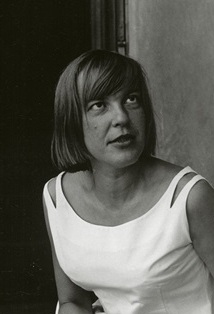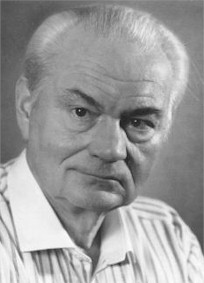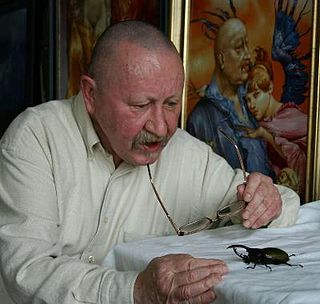
German literature comprises those literary texts written in the German language. This includes literature written in Germany, Austria, the German parts of Switzerland and Belgium, Liechtenstein, Luxembourg, South Tyrol in Italy and to a lesser extent works of the German diaspora. German literature of the modern period is mostly in Standard German, but there are some currents of literature influenced to a greater or lesser degree by dialects.

Paul Thomas Mann was a German novelist, short story writer, social critic, philanthropist, essayist, and the 1929 Nobel Prize in Literature laureate. His highly symbolic and ironic epic novels and novellas are noted for their insight into the psychology of the artist and the intellectual. His analysis and critique of the European and German soul used modernized versions of German and Biblical stories, as well as the ideas of Johann Wolfgang von Goethe, Friedrich Nietzsche, and Arthur Schopenhauer.

Ingeborg Bachmann was an Austrian poet and author. She is regarded as one of the major voices of German-language literature in the 20th century.

Michael Andreas Helmuth Ende was a German writer of fantasy and children's fiction. He is known for his epic fantasy The Neverending Story ; other well-known works include Momo and Jim Button and Luke the Engine Driver. His works have been translated into more than 40 languages and sold more than 35 million copies.

Heinz G. Konsalik, pseudonym of Heinz Günther was a German novelist. Konsalik was his mother's maiden name.
Bernhard Preim is a specialist in human–computer interface design as well as in visual computing for medicine. He is currently professor of visualization at University of Magdeburg, Germany.
Austrian literature is mostly written in German, and is closely connected with German literature.
Ralph Tegtmeier, also known as Frater V∴D∴ and Frater U∴D∴, is a German occultist, a longtime member of the Fraternitas Saturni, and co-founder of the Illuminates of Thanateros.

The 23rd Panzer Division was an armoured division in the German Army during World War II. Formed in France in late 1941, the division spent its entire combat history on the Eastern Front.

Christiaan Dirk Tonnis is a German symbolist/realist painter, draftsman, video artist and published author. He studied at the HfG Offenbach with Dieter Lincke and Herbert Heckmann, and lives in Frankfurt, Germany.

The Kurd Laßwitz Award is a science fiction award from Germany. The award is named after the science fiction author Kurd Laßwitz. Only works originally published in German are eligible for nomination in all categories except for the Foreign Work category.

Michael Maar is a German literary scholar, Germanist and author.

Bernhard Hennen is a German writer of fantasy literature.

Ferry Radax was an Austrian film maker born in Vienna, Austria.

Irmgard Schneeberger, also known by her pen name Sandra Paretti was a German writer.

Heinz Zander was a German painter, graphic artist, illustrator and writer. Zander belongs to the Leipzig School. His fields of work are painting (oil), drawing, graphics and illustration. Zander was also active as a writer and published novels, stories and essays. He worked with painting techniques oriented towards the Old Masters, from which he developed a completely independent pictorial language. Zander was inspired by Bosch, Grünewald, Altdorfer, Cranach and Italian Mannerists. He worked mainly with colourful resin-oil glazes.

Ignaz Kirchner was a German actor who made a career on German-speaking stages, especially at Vienna's Burgtheater where he played for 30 years. A character actor, he worked with leading stage directors. He often played opposite Gert Voss, both in classical drama such as Shakespeare's Antonio, with Voss as Shylock, and as Jago, with Voss as Othello, and especially in black comedies, such as Goldberg in Tabori's Die Goldberg-Variationen, and in Neil Simon's The Sunshine Boys, Beckett's Endspiel and Genet's Die Zofen. Kirchner and Voss were named Schauspielerpaar des Jahres twice, in 1992 and 1998.
The Seraph Award is a literary award for speculative fiction written in German. It is given annually during Leipzig Book Fair. The award is organized and overseen by the Phantastische Akademie.

Nicolas Mahler is an Austrian cartoonist and illustrator. Die Zeit, NZZ am Sonntag, Frankfurter Allgemeine Sonntagszeitung and Titanic print his comics. He is known for his comics Flaschko and Kratochvil and for his literary adaptations in comic form. His comics have been adapted into films and theatre plays. He was awarded the Max & Moritz Prize and the Preis der Literaturhäuser.














